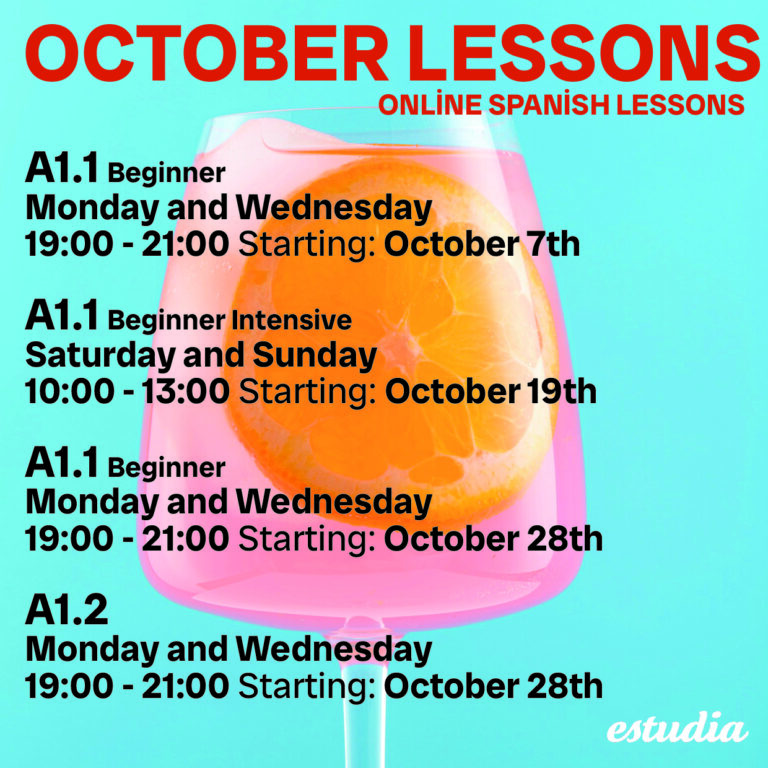In this article, we will examine the common mistakes that English speakers frequently make while learning Spanish and how to avoid them. You will find tips on pronunciation, misleading words, and other challenges. By being aware of these mistakes, you can improve your Spanish more quickly. The two main topics covered in this article are “Gender and Number” and “Using Unnecessary Pronouns ”
To read the first part go to:
3. Gender and Number
Other typical Spanish language mistakes that foreign students make involve gender and number. In fact, native Spanish-speakers can easily identify non-native speakers, because these kinds of mistakes are very obvious and Spanish-learners make them all the time. In Spanish, gender refers to whether a noun is masculine or feminine. For example, una mesa (“a table”) is feminine, while un vaso (“a glass”) is masculine.
Number refers to whether a noun is singular or plural; keep in mind that you must use the appropriate articles based on the number! For example, las mesas (“the tables”) is plural, while la mesa (“the table”) is singular.
How can you know what gender and number a noun is?
In terms of gender, feminine nouns generally end in -a or -e*: puerta (“door”) / llave (“key”). On the other hand, masculine nouns generally end with -o: vaso (“glass”) / suelo (“floor”) / baño (“bathroom”).
*Be careful, there are many exceptions to this!
A noun’s article will give information on both its gender and number, in most cases. We’ll talk more about this in the following sections.
1 – Plural vs. Singular (Is vs. Are)
Many students get confused about singular vs. plural nouns and their articles. In particular, the use of es and son (“is” and “are”) trips up new learners.
To help you avoid Spanish mistakes like this, you should know the difference between a phrase in the plural and another in the singular.
If a noun has an -S at the end and is also accompanied by son (“are”), it’s plural. On the other hand, if the noun does not carry an -S and is accompanied by es (“is”), it’s singular.
- Las iglesias son grandes. (“The churches are big.”) ✔
Las iglesias es grandes. (“The churches is big.”) ✘ - Los edificios son altos. (“The buildings are tall.”) – Plural
- El edificio es alto. (“The building is tall.”) – Singular
2 – Gender: Masculine vs. Feminine
Remember: Nouns and their articles are always going to be masculine or feminine. Here’s a chart to help you differentiate between the articles and what they mean:
| Singular M. | Plural M. | Singular F. | Plural F. |
| El / “The” | Los / “The” | La / “The” | Las / “The” |
| Un / “A” | Unos / “Some” | Una / “A” | Unas / “Some” |
Examples:
- Las chicas son muy listas ✔ (“The girls are very smart.”)
- Los chicas son muy listas ✘
- Mi hermana compró unos libros rojos ✔ (“My sister bought some big books”)
- Mi hermana compró unas libros rojos ✘
Now let’s see the difference between singular masculine and feminine articles:
- El perro está contento ✔ (“The dog is happy”)
- La perro está contento ✘
- Una puerta está abierta. ✔ (“A door is open”)
- Un puerta está abierta. ✘
4. Using Unnecessary Pronouns: You & I
As a general rule, pronouns in English are indispensable. In Spanish the use of pronouns is often unnecessary because verbs are already conjugated to show who is being talked about. But this is not the case in Spanish. This is largely an advantage for foreign students, as it makes sentences much easier to write and speak.
For example:
- Tú comes mucho = Comes mucho
(“You eat a lot.”)
However, many English-speakers, out of habit, construct their Spanish sentences using pronouns where they’re not needed.
Of course, this mistake isn’t too serious. The worst that will happen is that native speakers may joke that you speak like a robot.
Just try to remember that pronouns are generally irrelevant when speaking, since the verbs should already be conjugated to portray who you’re talking about.
- Yo voy sacar el perro a pasear = Voy a sacar el perro a pasear (“I’m going to take the dog for a walk.”)
- Tú necesitas descansar más = Necesitas descansar más (“You need to rest more.”)
Do you think you’ve made one of these mistakes?
Ready to improve your Spanish and correct these common mistakes? Join our Spanish classes at Estudia to gain confidence and fluency. Our expert instructors will guide you through every step, helping you master the language and overcome these challenges. Contact us today and start your journey to perfect Spanish!






